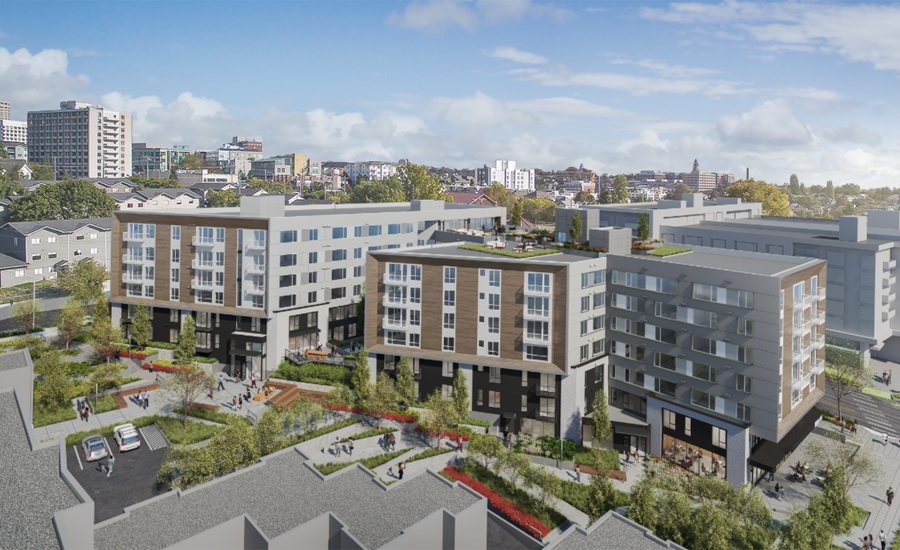What Salmon Safe in Seattle Means for Construction

As stormwater runs aplenty in Seattle, the act of treating that stormwater before it reaches the streams, rivers and lakes that surround the Pacific Northwest city can help create an official salmon safe designation.
Paul Allen’s Vulcan development group has put a focus on building for the official acknowledgement of “Salmon-Safe,” already completed with the Allen Institute and administrative office building for the Experience Music Program. Next, Vulcan’s Block 11 multifamily project in South Lake Union includes the installation of the second half of the Swale on Yale joint venture project with the Seattle Public Utilities to treat stormwater before it reaches Seattle’s Lake Union.
The new portion of the two block long swale situates on the eastern and western margins of the development, along the Pontius and Yale Avenue sides of the block. The first half of the Swale on Yale was completed in 2013, one block north. Once complete, all four swales in the area will treat a total of 190 million gallons of stormwater from 435 acres of Capitol Hill neighborhood streets and sidewalks annually. Using a diversion vault, stormwater passes through four biofiltration swales to organically filter out solids—such as motor oil, heavy metals and fertilizer—before entering Lake Union.
The Block 11 project will include green roofs atop the project and on its ground-floor awnings, partnering with roof drainage to direct stormwater to one of five bio-retention planters.
To qualify for the Salmon-Safe certification, a project must incorporate plants that filter contaminants while including construction elements for stormwater detention.
Vulcan says it hopes to employ the same Salmon Safe efforts for the new 621,000-sq-ft Google campus and 388,000-sq-ft Arbor Blocks project that Facebook will occupy.
Another recent project, Batik in Yesler Terrace, will collect rain from the roof to empty into street-side planters along both sides of Fir Street. Stormwater from approximately 80 percent of the project’s surface area will get treated onsite through the use of vegetated bio-retention structures.
“Through their extensive use of bioretention planters, vegetated roofs and water-efficient irrigation, Block 11 and Batik exemplify Salmon-Safe’s philosophy of encouraging low-impact practices that go beyond environmental regulations,” says Dan Kent, executive director of Salmon-Safe, in a statement.
To earn the official stamp of approval, projects must pass an interdisciplinary team of scientists comprised of stormwater management experts from the University of Washington, Washington State University and Mithun and Coho Environmental.
Follow Tim Newcomb on Twitter at @tdnewcomb.
